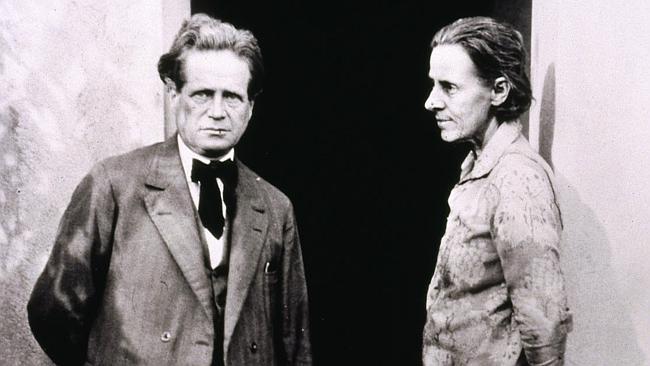Glenda Korporaal sheds light on Marion Mahony Griffin’s Canberra
The architect who burnished Walter Burley Griffin’s entry in the Canberra competition remains an elusive personality.

Marion Mahony, the second woman to graduate with an architecture degree from the Massachusetts Institute of Technology, went on to become the first licensed female architect in the US.
After working as a loyal assistant to Frank Lloyd Wright in Chicago for almost 15 years, Mahony (1871-1961) teamed up with a handsome man five years her junior, with whom she had previously worked at Wright’s architectural practice and whom she was soon to marry. This was the hugely talented, but often shy, Walter Burley Griffin (1876-1937), with whom throughout their long marriage she worked loyally and assiduously, often but not always by his side.
Like most educated Australians, Glenda Korporaal knew that Griffin’s prize-winning plan for Canberra as the capital city of our recently federated nation had changed Australian history.
But what about his wife, whose brilliant artwork had contributed to making Wright and Griffin architecturally famous, and who in particular had assisted her husband in winning first prize in the competition to design the new capital city of Australia? Who was she?
Hence this well-researched and beautifully illustrated biography, which goes a long way towards remedying the situation and bringing wider recognition to Mahony’s architectural and artistic contributions.
While much about Making Magic is admirable, the style of writing is less than perfect. Surprisingly for such a seasoned journalist, Korporaal is often verbose. Hence she overuses words such as “wonderful” and “amazing”, and frequently repeats the annoying and unnecessary phrase “of course”. Moreover, the syntax in Making Magic is sometimes faulty and askew.
Despite this and other stylistic infelicities, this detailed story of the life and work of Marion Mahony Griffin contains a great many gems relating to her personal and artistic achievements.
This is the result of Korporaal following the often elusive subject of her book to many places across the globe, from America to Australia and India.
A highlight of Making Magic is the use made of the detailed correspondence between the Griffins. This especially applies to a series of letters written in late 1935 and early 1936 by Mahony from the Sydney suburb of Castlecrag, overlooking Middle Harbour, where they had established an extended artistic community, while Griffin was working in the northeastern Indian city of Lucknow. His work there involved developing plans for a number of buildings, including a library at the university of Lucknow.
In April 1936, Mahony left Sydney by boat to join her husband a year before his death. This correspondence, which precedes their reunion, reveals that they both believed in reincarnation, as well as in the power of spirits, fairies and angels.
After reading this often entertaining biography, one is left in little doubt that it was Mahony’s drive that encouraged her husband to enter the competition to design Australia’s capital city. Moreover, is it highly likely that her brilliant drawings of the plan for Canberra may have been what charmed the judges into awarding Griffin the prize.
Korporaal puts it thus: “Without her energy and support, Walter would not have made the commitment to put in such a substantial and well-thought-out plan.” But she adds rather enigmatically: “Exactly what influence she had on the plan itself is more interesting.”
It is pleasing to report that the National Archives of Australia is the custodian of Mahony’s brilliant drawings of the Griffin plan for Canberra. What is equally pleasing is the fact that in 2007, Mahony’s book The Magic of America was published online.
In this monumental work, Mahony not only demonstrates her love for the unique landscape of her home country, as well as its democratic system: the book is also a sustained tribute to her husband, one of the best-known architects to have lived and worked in Australia.
Despite all the scholarship and labour that has gone into Making Magic, in some ways Mahony’s persona remains elusive.
According to Korporaal, Mahony “made magic” in her life and work. Hence the title.
However, a fully rounded appreciation of this fine artist, architect and artisan sometimes requires a leap of the imagination and an ability to read between the lines.
What the author has achieved is to carefully reassemble a jigsaw that Mahony left for others to discover.
Although the picture of her subject may never be complete, it is difficult not to sympathise with Korporaal’s shy hope that “if you look closely enough, you will glimpse enough of her spirit to appreciate her magic”.
Ross Fitzgerald is an academic and author. His latest Grafton Everest novel is reviewed on page 22.
Making Magic: The Marion Mahony Griffin Story
By Glenda Korporaal
Oranje Media, 342pp, $34.95


